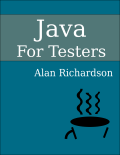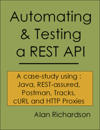AI will change Software Development. We don’t yet know how the Software Testing role will change. And we don’t know what skill sets we will need to develop. However, we do know that we can use AI to augment jobs, rather than replace them. When we view AI as an augmentation technology, we can experiment to strengthen our position for the future and influence the adoption of AI tooling.
Live Recording
This was live streamed on Zoom and LinkedIn.
Recording can be seen on LinkedIn or YouTube:
Summary Recording
This summary video was automatically generated using NotebookLM and the voiceover added using Alan’s cloned AI voice in Descript.
Patreon Recording
- Full Recording of the practice session
- Summary and explanation of AI used to generate Summary
About
Browserstack hosted a Community Day on August 19 2025:
- https://www.linkedin.com/events/browserstackcommunityday7356268863690338304/
- https://www.browserstack.com/webinars/community-day-august-2025
Abstract: Essential Skill Development for Testers in an Age of AI
Title:
- Essential Skill Development for Testers in an Age of AI
Abstract:
AI will change Software Development. We don’t yet know how the Software Testing role will change. And we don’t know what skill sets we will need to develop. However, we do know that we can use AI to augment jobs, rather than replace them. When we view AI as an augmentation technology, we can experiment to strengthen our position for the future and influence the adoption of AI tooling.
How can we best position our work for augmentation? First, by understanding the fundamentals of our work and strengthening our core skills. Second, by learning the strengths and limits of the current approaches to AI. Third, by experimenting with AI tooling as a supporting tool, rather than using it as a crutch.
In this session, Alan will describe what he is doing to prepare himself for a world filled with AI adoption, what he has learned from this process, and how you can prepare too.
A few key takeaways:
- The stronger your core skills, the more effective your use of AI can be.
- Experiment with AI to augment your work rather than replace yourself.
- Using AI as a crutch means that you are building a dependence on AI and are more likely to be replaced.
- Practical tips for building your core skill set.
- How to experiment with AI.
Slides
github.com/eviltester/eviltester-talks/tree/main/browserstack/2025/community-day
Notes
An edited AI generated summary from the transcript.
1. The Hype vs. Reality of AI
We are currently in a “period of hype” surrounding AI, and “a lot of people are completely in awe of the AI technology.” Be wary of “over promises” and remember that if AI truly lived up to its claims, it would be “a pretty easy sell.” The current situation, where “every tool is AI enabled or AI native whether you want it or not,” has unproven use cases and a lack of understanding about how these advanced technologies actually work.
Remember Arthur C. Clarke’s quote, “Any sufficiently advanced technology is indistinguishable from magic,” and the “Wizard of Oz,” where a seemingly omnipotent entity conceals a “man behind the curtain.” We should demystify AI: “what we have to do is understand enough that we view as technology, not magic, then we can start thinking critically about it.” This critical thinking involves understanding AI’s “limits and what those limits are” and focusing on “how we can use this effectively to improve what we do rather than replace what we do.”
2. AI’s Current Impact and Effective Augmentation
AI is already changing software development, primarily in “changing the way that we automate software, but not so much the way that we test software, at least at the moment.” I use AI as an “augmentation tool” for coding.
Key areas of effective AI augmentation:
- Coding Augmentation: Tools like Copilot provide “code completion in terms of lots of code,” speeding up the coding process and making it “a little bit easier.” While not always perfect, it’s often “good enough to then edit” for tasks like generating try-catch blocks or refactoring.
- Code Review: AI is “quite good” at identifying missed edge cases, suggesting better coding approaches, and simplifying code.
- Code Explanation: AI can “explain” unfamiliar code, libraries, or different parts of a programming language, saving time on documentation lookup.
- Pull Request Review: Copilot can review code in pull requests, offering “another view onto your code” that helps developers “think” and pause to improve their work.
The fundamental principle for using AI effectively is: “You do something, then once you’ve done it, you get the AI to give you a second opinion or a new set of questions to ask or another set of ideas.” This approach focuses on enhancing human capabilities rather than replacing them.
3. Ineffective and Risky AI Use Cases
I advise against using AI for certain tasks, particularly those involving human-to-human communication or “vibe coding” (generating entire codebases from prompts).
Areas to avoid using AI for:
- Direct Human Communication: “If it’s a human to human communication and it’s important, then we’re doing that because we’re trying to think about a problem.” Delegating email writing, reading, or summarising to AI for crucial communications is “a complete pointless waste of time” as it becomes “just AI communicating. It’s not human to human.”
- Writing Issues and Stories: These require effective and clear communication, which AI is “not really good at.”
- “Vibe Coding”: Generating entire codebases from prompts is problematic because “when it stops working in which case you’re in a really hard position and the code might not always be good.” AI-generated code often doesn’t meet human team standards, uses different patterns, and is “not really designed to be reviewed.” When it goes wrong, AI often enters a “death spiral where it can’t fix things and it’s just randomly changing things.”
- Algorithmic Replacement: “I don’t believe AI can replace an algorithm. I wouldn’t use it to replace an algorithm. I’d much rather use an algorithmic tool that is reliable.”
- Relying Solely on AI for Test Planning and Strategy: Instead of asking for “all the test plan and all the test strategy and all the test cases and inputs,” testers should “use smaller prompts” and “do the work.” AI can then be used to “check your work.”
A significant concern is the “danger” not from AI itself, but from “people in charge believe that it can [replace humans] or want to believe that it can.” This belief, coupled with over-trust and being “in awe of the AI,” leads to viewing AI as a “crutch rather than a tool,” which ultimately “demonstrat[es] that we can be replaced.”
4. The Importance of Human Skill and Excellence
A recurring message in the talk is the necessity for human professionals, particularly testers, to strive for excellence and continuously develop their skills.
Key takeaways on skill development:
- Augmentation over Replacement: If an activity can be done by a human, “we don’t need to replace that activity. We can augment it and enhance it.”
- The “Good Enough” Fallacy: “Good enough is not flexible enough.” In an environment where AI is “encroach[ing] upon every environment,” being merely “good enough” is insufficient. “We need to be better. We need to learn to be excellent at what we do.”
- AI as an Enabler for the Skilled: “If you’re already good, these tools can make you better.” Skilled individuals can use “much less powerful AIs which you can also run locally,” offering benefits in cost and environment.
- Learning Core Skills First: If one cannot code, relying on AI for “vibe coding” is a temporary solution. The speaker advises to “learn how to do it so that you can use the AI to augment that process.”
- Review and Management Skills: AI functions like an “autonomous junior team member” that “needs someone to review and manage it if it goes wrong and it will go wrong.” Learning to review and manage work is crucial for career progression, regardless of AI.
- Resilience when AI Fails: If a skilled person uses AI and it “goes wrong, you can fix it.” If a person relies solely on AI without the underlying skill, “you’re dead because you can’t fix it.”
- Historical Context: I draw on 30+ years of experience, noting that past technological advancements (formal specifications, 4GLs, CASE tools, early AI) also promised to eliminate programmers and testers, but instead led to “entirely new and better development tools,” augmenting human capabilities rather than replacing them. “None of this removed the need for programmers and testers.” We made it easier for the best to get better. And easier for people to rank amongst the best.
- Human Advantages: Humans remain “more up-to-date and we will be more creative in our approach” compared to LLMs, which are often “out of date.”
5. Practical Steps for Engaging with AI
Concrete advice for professionals to interact with and learn about AI responsibly:
- Understand Enough, Not Everything: “We don’t need a degree in machine learning to understand basically how LLMs work or basically what an LLM does.” Focus on understanding its function, variety of outputs, impact, risks, and implications.
- Focus on Your Domain: Identify areas where AI is hyped to have an impact on your work. “If you care that it will impact that area… then you better learn how to do [that skill].”
- Experiment Hands-On: “We need to use it and experiment with it rather than just read blog posts or watch videos.” This direct experience reveals “its strengths and limitations.”
- Prioritise Augmentation: “Prioritize experiments with augmentation.” Even if AI doesn’t work perfectly, the “extra practice will have been good for you.”
- Don’t Delegate Thinking: Use AI to “prompt your thinking,” not to “give me the answers.” Ask questions like “What questions should I ask to expand the system description?”
- Utilise Free Tools and Local Models: Experiment with free tools (e.g., Google Notebook, Chrome AI assistance, OLLAMA, continue.dev) and local LLMs to understand their capabilities and limitations without data confidentiality concerns.
- Practice Core Skills: Websites like APIChallenges.evilTester.com and testpages.eviltester.com are recommended for practising testing and automation skills.
- Be Mindful of Data Confidentiality: Cloud AI tools may use user data for training, and “people are hacking cloud AI systems.” Exercise caution with sensitive work information.
- Manage Fear of Missing Out (FOMO): “No one can keep on top of everything that is going on with AI.” If a truly revolutionary AI emerges, “someone will tell you,” and “it will be easy to learn.”
- Maintain a Sustainable Pace: “Learn it when it’s appropriate,” but “don’t neglect core skills.”
- AI Needs Good People: The ultimate message is “to survive with AI we need to be good, better than good, we need to be excellent.”
In conclusion, we need proactive skill development and judicious AI integration. AI is not a replacement for human intellect and expertise, but as a powerful tool to be harnessed by skilled professionals, making them even more effective and resilient in the face of technological change.







